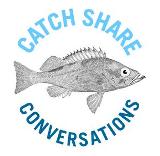 Once managers and fishermen decide to implement a catch share program, the next critical step in achieving the conservation, economic and social goals of the fishery is to effectively design the catch share program. Catch shares management is not a one-size-fits-all approach; rather programs are designed to meet the specific needs and goals of each fishery. From determining who holds the allocation privilege to how shares or quota are allocated to whether or not allocation is transferable, there are many factors to consider along the way of designing an effective catch share management system.
Once managers and fishermen decide to implement a catch share program, the next critical step in achieving the conservation, economic and social goals of the fishery is to effectively design the catch share program. Catch shares management is not a one-size-fits-all approach; rather programs are designed to meet the specific needs and goals of each fishery. From determining who holds the allocation privilege to how shares or quota are allocated to whether or not allocation is transferable, there are many factors to consider along the way of designing an effective catch share management system.
Our new monthly EDFish series, Catch Share Conversations, takes a look at some of these decision points or conversations in the design process. This month we offer a look at harvesting cooperatives, which have a variety of benefits and some challenges.
In harvesting cooperatives, groups of organized fishery participants jointly manage secure and exclusive access to the fishery. In return for this privilege, cooperatives are accountable for operating a sustainable fishery within the scientifically determined catch limit and/or dedicated area. Examples of cooperatives include the New England groundfish sectors program and the Bering Sea’s Pollock Conservation Cooperative.
You can read our Catch Share Conversations Backgrounder for a deeper look at harvesting cooperatives. In the next few days on EDFish, we’ll also share three specific case studies of cooperative-based catch shares.









